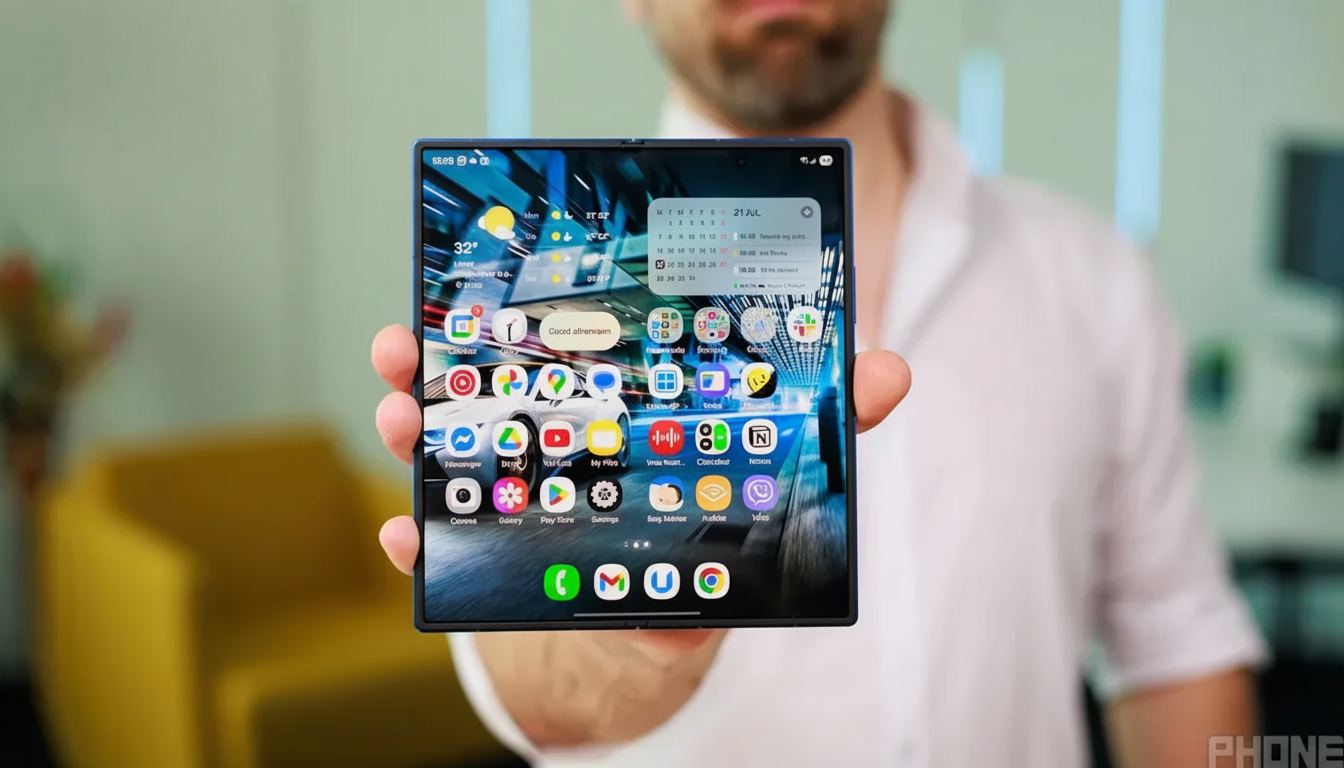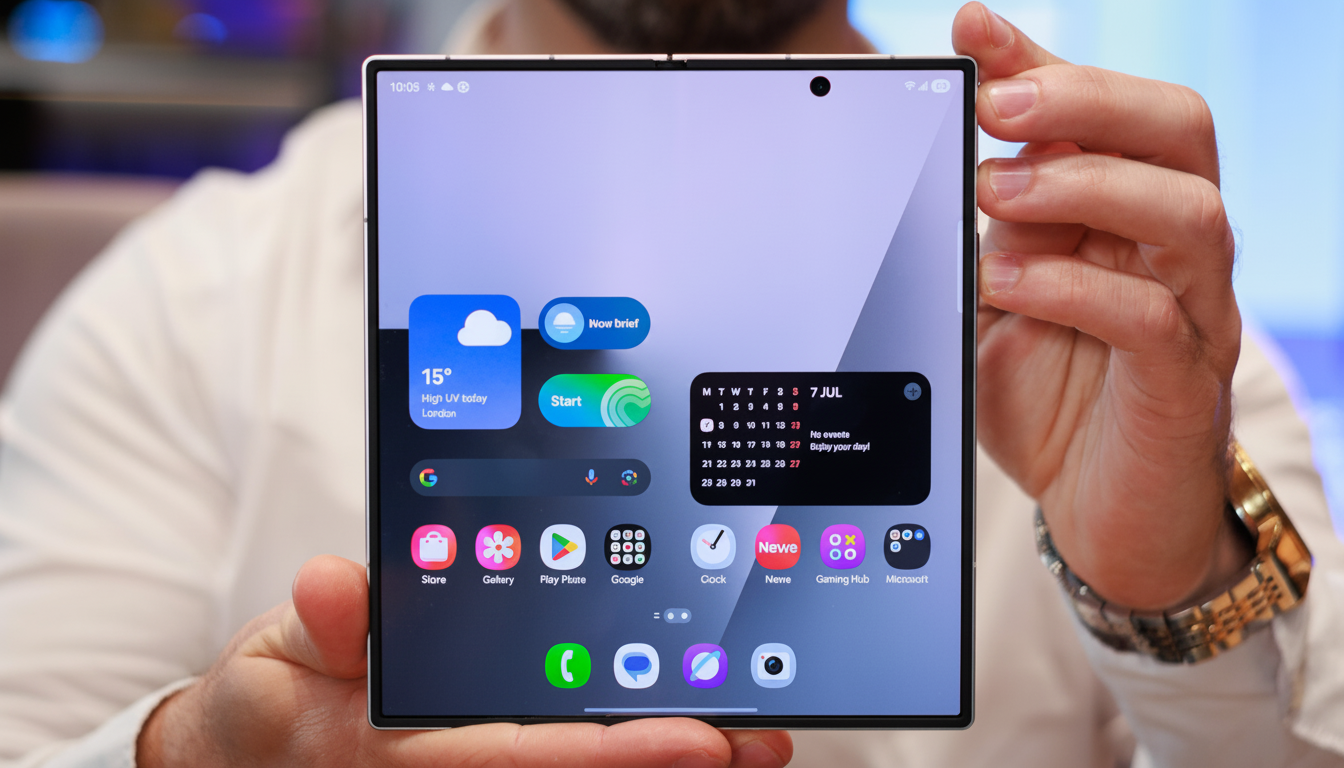Samsung seems prepared to respond to a message it has heard loud and clear from customers: significant, visible improvements get attention.
Industry chit-chat from Korea suggests a Galaxy Z Fold 8 with a battery over 5,000mAh, S Pen support making a comeback, and less notable display creasing — three shifts that seem to speak directly to long-running user bugbears and could help stretch the sales wings of the more radical evolution brought in by the Z Fold 7.

A Bigger Battery Might Bust Samsung’s Fold Stalemate
Through five generations, Samsung’s book-style Fold line clung to a 4,400mAh capacity — a number that frequently had eager beavers using power-saving modes or defaulting to mid-day top-ups.
A leap past 5,000mAh represents the first properly material capacity lift from the Fold family and would see Samsung finally level with rivals who’ve previously stretched beyond — Vivo’s X Fold3 Pro comes packing a 5,700mAh pack, and both Honor’s Magic V2 and Huawei’s Mate X5 hover around that 5,000mAh mark.
Getting 5,000mAh into a thin, big-screened folding phone is no small feat. It probably needs denser cell chemistry, a stacked battery pack, or some combination of both, in addition to rethinking the internal space allocation around its hinge and camera modules. Samsung SDI has been investing in higher energy density pouch cells and racking techniques; combine that with a next-gen Snapdragon platform, more efficient OLED drivers, and we could have the sort of real‑world endurance bump users really feel.
It’s also one of the biggest motivations to buy in smartphone satisfaction studies from organizations like J.D. Power, and a top barrier for foldable adoption according to Counterpoint Research consumer surveys. A bigger pack is not merely a spec sheet win; it’s an explicit response to the number one reason fence-sitters hesitate.
For the S Pen, a Needed Return on the Fold 8
Reports indicate Samsung could bring back S Pen input after removing the digitizer on the Z Fold 7 to achieve its ultrathin design. If true, the move would mean a reset: getting back an underappreciated productivity advantage without admitting that this year’s model got any fatter or heavier than last year’s.
Samsung has fostered a faithful community of S Pen users since the Galaxy Note days, and the feature is now synonymous with its Ultra line. Restoring accurate pen input to a tablet‑sized inner display would reopen use cases — markup, split‑screen note‑taking, on-the-go illustration — that differentiate a “Fold” from a large candybar phone. What remains to be seen is implementation: how useful and efficient would that silo-storage proposition be? Siloed storage would, of course, be the best for adoption, but I would still consider a robust digitizer with magnetic attachment as an improvement.

The Material-Level Attack on the Fold’s Screen Crease
A “shallow crease” is also on the rumor mill, apparently made possible by laser‑drilled metal plate layers under the display. This, along with ultra‑thin glass and a rebalanced waterdrop hinge design, can help distribute stress more evenly at the axis of the fold. Rivals have used similar strategies to keep the visibility of creases under control, and supply‑chain analysts at Display Supply Chain Consultants have seen an industry‑wide move toward material engineering rather than hinge tweaks alone.
So, no wonder its crease matters, because that crease is the most surface-level evidence I found while using it that foldables are still a baby of a category. Dim that visual and tactile distraction, and perceived quality improves at every interaction — whether you’re scrolling text or watching video — without fundamentally altering the design.
Why Bigger Moves Make Business Sense for Foldables
Samsung’s wager fits market trends. Foldables continue to grow at a double‑digit clip, according to research firms such as IDC and Counterpoint, but adoption rates are sensitive to three factors:
- Battery life
- Durability
- Price
The Z Fold 7’s slender frame and lighter feel directly led to durability and usability concerns being addressed, which in turn helped expand appeal; the natural progression would be tackling endurance and utility over a single product cycle.
There’s also a playbook here. When OEMs bring unmistakable, day‑to‑day enhancements to market (think Apple’s camera leaps or Google’s AI‑forward updates), upgrade intent rises and average selling prices stay steady. For a premium device that needs to justify its footprint and price, a larger battery, pen input, and a cleaner panel are the very definition of “no‑debate” upgrades — enhancements that help maintain momentum.
What to Watch as Galaxy Z Fold 8 Takes Shape
Nothing here is official yet, and execution will be critical. Without intelligent heat dissipation, more battery means more mass or complexity in thermal management. S Pen support requires strong palm rejection on a plastic‑glass composite surface. And fold suppression cannot come at the expense of panel long life or increased defects.
If Samsung manages to thread the needle — bigger battery, brought-back pen, tighter crease without backsliding on thinness — it’ll be doubling down on what should now be a simple truth based on this year’s market signals: bold, practical improvements win. That’s the formula that turned the Z Fold 7 from a niche device into part of the mainstream conversation, and it’s the recipe for how Samsung could do that all over again with the Fold 8.

